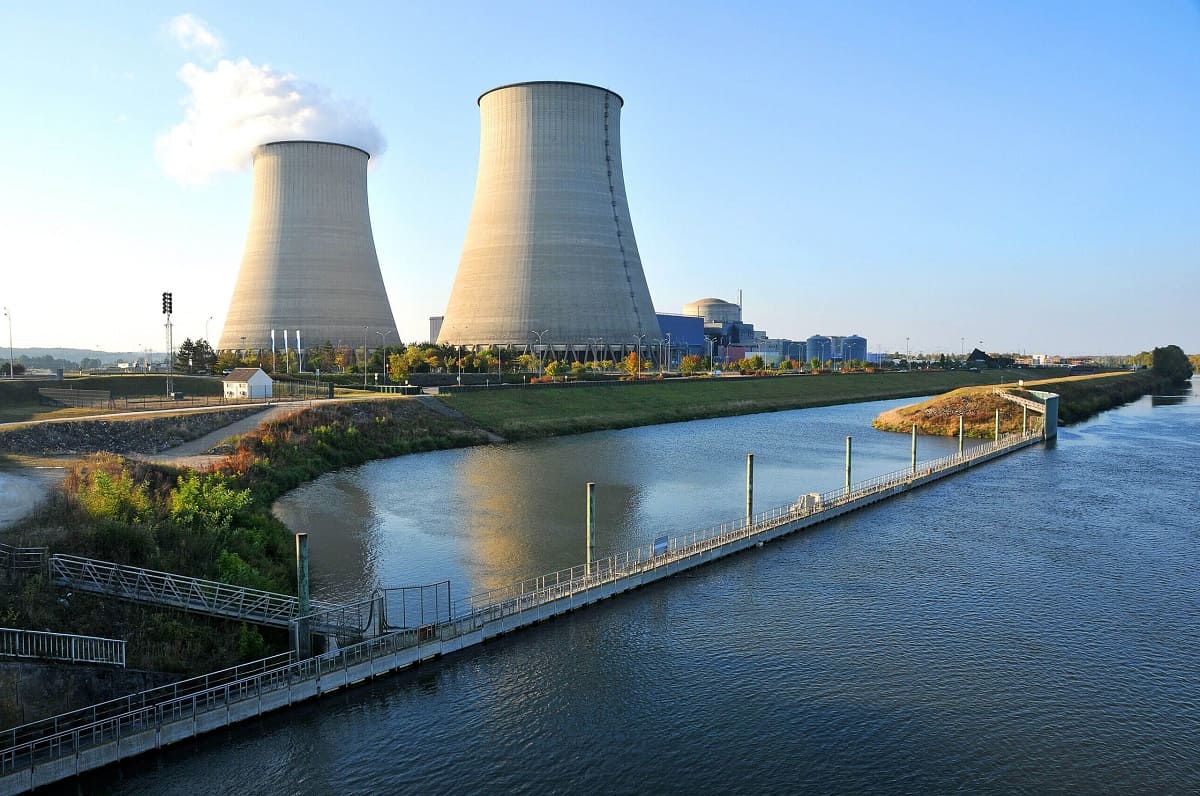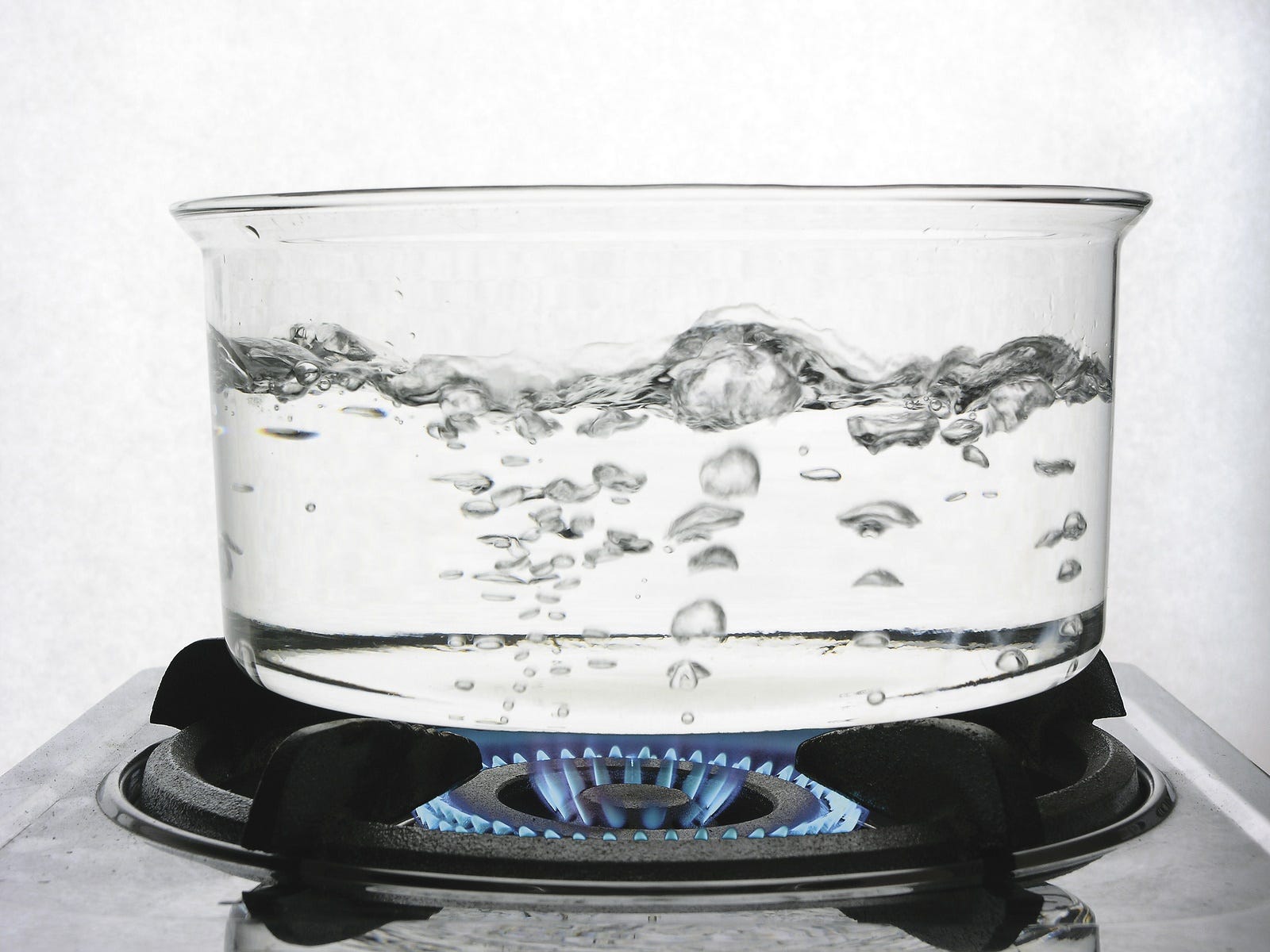Home>Weather and Climate>Issues Arising From High Water Temperatures In French Nuclear Power Plants


Weather and Climate
Issues Arising From High Water Temperatures In French Nuclear Power Plants
Published: March 3, 2024
Learn about the impact of high water temperatures on French nuclear power plants due to weather and climate conditions. Understand the issues and potential solutions.
(Many of the links in this article redirect to a specific reviewed product. Your purchase of these products through affiliate links helps to generate commission for Temperatures.com, at no extra cost. Learn more)
Table of Contents
Introduction
Weather and climate play a crucial role in the operation of nuclear power plants, with high water temperatures posing significant challenges to their functionality and safety. As the global climate continues to undergo changes, the impact of rising temperatures on nuclear facilities has become a growing concern. In the context of French nuclear power plants, the issue of high water temperatures has garnered attention due to its potential implications on plant operations and safety protocols.
The interaction between weather patterns and nuclear power infrastructure is a complex and multifaceted issue. High water temperatures, often influenced by prolonged heatwaves and changing climate patterns, can directly affect the efficiency and safety of nuclear power plants. The reliance of these facilities on water for cooling purposes makes them particularly vulnerable to the adverse effects of elevated water temperatures.
In recent years, the frequency and intensity of heatwaves have raised alarms within the nuclear energy sector, prompting a closer examination of the potential risks associated with high water temperatures. The unique geographical locations of French nuclear power plants, many of which are situated near rivers or coastal areas, further accentuate the significance of this issue.
The intricate interplay between weather, climate, and nuclear power infrastructure underscores the need for a comprehensive understanding of the challenges posed by high water temperatures. By delving into the impact of elevated water temperatures on nuclear power plants, it becomes evident that proactive measures and innovative solutions are imperative to ensure the continued safe and efficient operation of these critical facilities.
As we delve deeper into the impact of high water temperatures on French nuclear power plants, it is essential to recognize the multifaceted nature of this issue and explore potential strategies to address and mitigate its effects. This article aims to shed light on the complexities surrounding this topic, offering insights into safety concerns, regulatory compliance, and case studies of high water temperature incidents in French nuclear power plants. Through a comprehensive exploration of these aspects, we can gain a deeper understanding of the challenges posed by high water temperatures and the measures required to safeguard the integrity and resilience of nuclear power infrastructure.
Impact of High Water Temperatures on Nuclear Power Plants
High water temperatures have a profound impact on the operational dynamics of nuclear power plants, presenting a range of challenges that can compromise their efficiency and safety. The primary function of water in these facilities is to facilitate the cooling process essential for maintaining optimal operating conditions. However, when water temperatures rise significantly, several critical issues emerge, exerting pressure on the overall functionality of the plants.
One of the most immediate consequences of high water temperatures is the diminished cooling capacity of the nuclear power plants. As the surrounding water becomes warmer, its effectiveness in absorbing and dissipating heat decreases, leading to potential limitations in the cooling capabilities of the plant. This can result in operational constraints and necessitate adjustments to maintain the required temperature levels within the facility.
Moreover, elevated water temperatures can elevate the risk of thermal pollution, which occurs when the discharge of heated water back into the environment raises the overall temperature of the receiving water body. This phenomenon can have detrimental effects on aquatic ecosystems, disrupting the natural balance and potentially harming marine life. The environmental implications of thermal pollution underscore the far-reaching impact of high water temperatures beyond the confines of the nuclear power plants themselves.
Furthermore, the structural integrity of the plant's components and systems can be compromised by prolonged exposure to high water temperatures. The increased thermal stress on critical infrastructure elements, such as pipelines and cooling systems, can accelerate wear and tear, potentially leading to mechanical failures or reduced operational lifespan. This poses a significant safety concern and underscores the need for proactive measures to mitigate the impact of high water temperatures on the physical integrity of the nuclear power plants.
Additionally, high water temperatures can exacerbate the risk of regulatory non-compliance, as nuclear facilities are required to adhere to stringent operational standards and environmental regulations. The inability to maintain water temperatures within prescribed limits can result in violations of regulatory protocols, potentially leading to legal repercussions and reputational damage for the operators of the nuclear power plants.
In essence, the impact of high water temperatures on nuclear power plants extends beyond mere operational challenges, encompassing environmental, safety, and regulatory dimensions. Understanding and addressing these multifaceted implications is crucial to ensuring the resilience and sustainability of nuclear power infrastructure in the face of evolving climate patterns and weather dynamics.
Safety Concerns and Regulatory Compliance
The intersection of high water temperatures and nuclear power plants gives rise to profound safety concerns and regulatory compliance challenges. The safety of nuclear facilities is paramount, and any factors that compromise this aspect demand meticulous attention and proactive measures.
First and foremost, high water temperatures can significantly impact the safe operation of nuclear power plants. The cooling systems within these facilities are designed to function within specific temperature parameters, ensuring the stability and integrity of the entire operation. However, when faced with elevated water temperatures, the efficacy of these cooling systems may be compromised, potentially leading to operational instabilities and heightened safety risks. The potential for overheating and related malfunctions necessitates stringent safety protocols and continuous monitoring to mitigate the risks posed by high water temperatures.
Regulatory compliance is another critical dimension affected by high water temperatures in nuclear power plants. Stringent regulations govern the operation of these facilities, encompassing environmental standards, safety protocols, and operational guidelines. The inability to maintain water temperatures within prescribed limits can result in non-compliance with these regulations, triggering legal and regulatory repercussions. This not only jeopardizes the operational continuity of the nuclear power plants but also undermines public trust and confidence in their adherence to safety and environmental standards.
Furthermore, the environmental impact of high water temperatures adds another layer of complexity to the safety concerns and regulatory compliance landscape. Thermal pollution resulting from the discharge of heated water back into the environment can disrupt aquatic ecosystems, posing ecological risks and necessitating adherence to environmental regulations. The potential consequences of thermal pollution on marine life and water quality underscore the imperative of stringent regulatory compliance to mitigate adverse environmental impacts.
Addressing safety concerns and ensuring regulatory compliance in the face of high water temperatures requires a multi-faceted approach. Proactive monitoring, advanced cooling technologies, and robust safety protocols are essential to mitigate the safety risks associated with elevated water temperatures. Additionally, stringent adherence to regulatory standards, coupled with proactive environmental stewardship, is crucial to ensuring the sustainable and compliant operation of nuclear power plants amidst changing climate dynamics.
In essence, the safety concerns and regulatory compliance challenges stemming from high water temperatures in nuclear power plants necessitate a comprehensive and proactive approach to safeguarding the integrity, safety, and environmental sustainability of these critical energy facilities. By addressing these challenges with diligence and innovation, the nuclear energy sector can navigate the complexities posed by high water temperatures while upholding the highest standards of safety and regulatory compliance.
Potential Solutions and Mitigation Strategies
Addressing the challenges posed by high water temperatures in French nuclear power plants necessitates the implementation of proactive solutions and robust mitigation strategies. By leveraging innovative technologies and operational best practices, the nuclear energy sector can effectively mitigate the impact of elevated water temperatures on plant operations, safety, and environmental sustainability.
-
Advanced Cooling Technologies:
Embracing advanced cooling technologies is pivotal in enhancing the resilience of nuclear power plants against high water temperatures. Innovative cooling systems, such as hybrid cooling towers and enhanced heat exchange mechanisms, can bolster the efficiency of heat dissipation, enabling the plants to maintain optimal operating temperatures even amidst elevated water temperatures. By integrating cutting-edge cooling technologies, nuclear facilities can mitigate the operational challenges posed by high water temperatures while ensuring the safety and stability of their operations. -
Adaptive Operational Protocols:
Developing adaptive operational protocols tailored to address high water temperature scenarios is essential for mitigating the impact on nuclear power plants. This involves establishing dynamic operational guidelines that account for fluctuating water temperatures, enabling the plants to adjust their cooling processes and operational parameters in response to environmental dynamics. By incorporating flexibility into their operational protocols, nuclear power plants can effectively navigate the challenges posed by high water temperatures, ensuring continuous operational stability and safety. -
Environmental Stewardship and Monitoring:
Proactive environmental stewardship and continuous monitoring play a pivotal role in mitigating the environmental impact of high water temperatures on nuclear power plants. Implementing comprehensive environmental monitoring programs enables the early detection of potential ecological risks associated with thermal pollution, empowering the plants to take timely remedial actions. Additionally, prioritizing environmental sustainability through responsible water discharge practices and ecological conservation initiatives is crucial in mitigating the environmental repercussions of elevated water temperatures. -
Research and Development Initiatives:
Investing in research and development initiatives focused on high water temperature resilience is instrumental in driving innovation within the nuclear energy sector. Collaborative efforts to develop novel materials, advanced cooling technologies, and predictive modeling tools can enhance the sector's capacity to proactively address the challenges posed by high water temperatures. By fostering a culture of innovation and continuous improvement, nuclear power plants can stay at the forefront of technological advancements, bolstering their resilience against the impact of elevated water temperatures.
In essence, the implementation of advanced cooling technologies, adaptive operational protocols, environmental stewardship, and research-driven initiatives constitutes a comprehensive approach to mitigating the impact of high water temperatures on French nuclear power plants. By embracing these proactive solutions and robust mitigation strategies, the nuclear energy sector can navigate the complexities posed by elevated water temperatures while upholding the highest standards of safety, operational resilience, and environmental sustainability.
Case Studies of High Water Temperature Incidents in French Nuclear Power Plants
In recent years, French nuclear power plants have encountered several high water temperature incidents, shedding light on the critical implications of this phenomenon on plant operations and safety. One notable case occurred at the Tricastin Nuclear Power Plant, where the rising temperatures of the adjacent water bodies posed significant challenges to the facility's cooling systems. The prolonged heatwave in the region led to a substantial increase in the water temperatures, surpassing the anticipated levels for efficient heat dissipation. This necessitated immediate operational adjustments and heightened monitoring to mitigate the impact on the plant's functionality and safety protocols.
Similarly, the Cruas Nuclear Power Plant faced a high water temperature incident attributed to the unprecedented heatwave conditions in the region. The soaring temperatures of the Rhône River, vital for the plant's cooling processes, posed operational complexities, prompting the implementation of adaptive operational protocols and intensified cooling measures. The incident underscored the vulnerability of nuclear power plants to the intensifying effects of climate change, emphasizing the need for proactive strategies to address high water temperature scenarios.
Furthermore, the Bugey Nuclear Power Plant encountered challenges stemming from elevated water temperatures, necessitating a comprehensive reassessment of its cooling infrastructure and operational resilience. The confluence of prolonged heatwaves and rising water temperatures in the surrounding environment tested the plant's capacity to maintain optimal operational conditions. This prompted the deployment of advanced cooling technologies and stringent environmental monitoring to mitigate the impact on the plant's safety and regulatory compliance.
These case studies exemplify the tangible impact of high water temperatures on French nuclear power plants, highlighting the imperative of proactive measures and adaptive strategies to navigate the complexities posed by elevated water temperatures. The incidents underscore the need for continuous innovation and vigilance within the nuclear energy sector to ensure the resilience and safety of these critical facilities in the face of evolving climate dynamics.
In essence, the case studies of high water temperature incidents in French nuclear power plants serve as compelling illustrations of the multifaceted challenges posed by this phenomenon. By analyzing these incidents and their implications, the nuclear energy sector can glean valuable insights to inform the development of robust mitigation strategies and proactive measures, ensuring the sustained safety, operational stability, and environmental sustainability of French nuclear power plants in the context of rising water temperatures.
Conclusion and Recommendations
In light of the multifaceted challenges posed by high water temperatures in French nuclear power plants, it is imperative to underscore the critical importance of proactive measures and innovative strategies to mitigate the impact of elevated water temperatures. The intersection of weather, climate, and nuclear infrastructure necessitates a comprehensive approach to safeguarding the safety, operational resilience, and environmental sustainability of these vital energy facilities.
Recommendations
-
Continued Research and Development: The nuclear energy sector should prioritize ongoing research and development initiatives focused on enhancing the resilience of nuclear power plants against high water temperatures. Collaborative efforts to advance cooling technologies, predictive modeling tools, and adaptive operational protocols are essential to fortify the sector's capacity to address the evolving challenges posed by elevated water temperatures.
-
Adaptive Operational Protocols: Implementing dynamic operational guidelines tailored to address high water temperature scenarios is crucial. By integrating flexibility into operational protocols, nuclear power plants can effectively navigate the challenges posed by fluctuating water temperatures, ensuring continuous operational stability and safety.
-
Environmental Stewardship and Monitoring: Proactive environmental stewardship and comprehensive monitoring programs are pivotal in mitigating the environmental impact of high water temperatures. Prioritizing responsible water discharge practices and ecological conservation initiatives is essential to mitigate the ecological risks associated with thermal pollution.
-
Regulatory Compliance and Safety Protocols: Stringent adherence to regulatory standards and robust safety protocols is imperative to ensure the sustainable and compliant operation of nuclear power plants amidst changing climate dynamics. Continuous vigilance and adherence to safety guidelines are essential to mitigate the risks posed by high water temperatures.
-
Public Awareness and Engagement: Fostering public awareness and engagement regarding the impact of high water temperatures on nuclear power plants is essential. Transparent communication and proactive engagement with stakeholders can enhance understanding and support for the measures undertaken to address the challenges posed by elevated water temperatures.
In conclusion, the challenges posed by high water temperatures in French nuclear power plants necessitate a proactive and collaborative approach. By embracing innovative solutions, adaptive strategies, and stringent adherence to safety and environmental standards, the nuclear energy sector can navigate the complexities posed by elevated water temperatures while upholding the highest standards of safety, operational resilience, and environmental sustainability.














